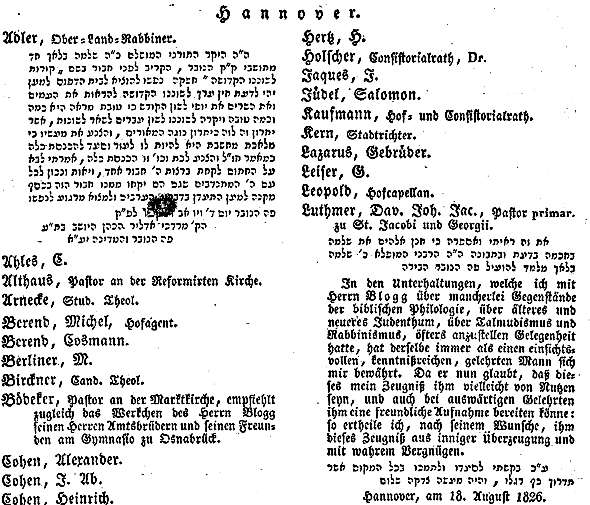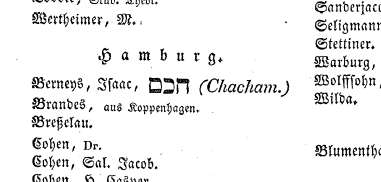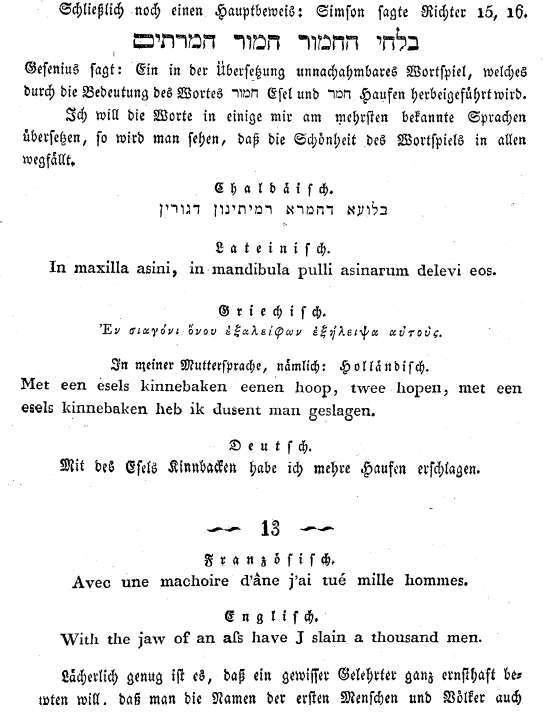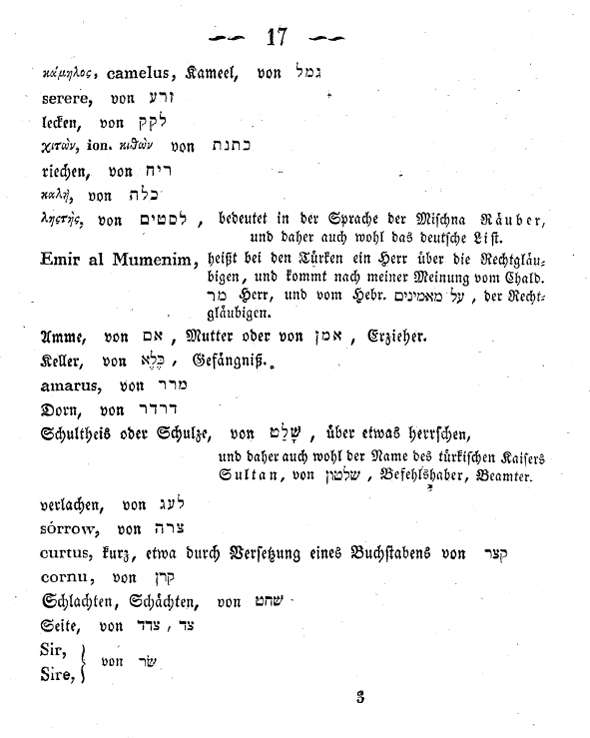One of his more interesting works was his בנין שלמה (Ædificium Salomonis), a history of the Hebrew language (1831). This work included an earlier work published in 1826, the קורות לשוננו הקדושה. Here is its title page:

This particular book has a wonderful subscription list consisting of "Professors, Preachers, Rabbis and Friends of Hebrew Literature." It is a normal subscription list, consisting of names arranged by place (Altona to Zellerfeld), however in addition to that, it includes occasional German and Hebrew notes to the author by subscriber. Below is one such sample:

Here we see the subscriptions from his hometown of Hannover, which includes Rabbi Mordechai Adler, its Chief Rabbi (and father of eventual British Chief Rabbi N. M. Adler) as well as two pastors, one of whom begins and signed his note in Hebrew. This, the 1820s, is truly a snapshot in time as one isn't likely to see these sorts of things anymore.
Also worth noticing is the subscription entry for Chacham Isaac Bernays, his title printed in extra large type:

This is a page concerning translation, which I include because I always enjoy seeing English in works from this period and earlier:

Blogg displays his interesting take on Hebrew scholarship. For example, here is a page of foreign words he considers to be derived from Hebrew:

In a list of the great medieval experts on grammar, Blogg notes (p. 37) that Rashi's standing as the primary commentator is hinted at by his acronym, taken to stand for ראש שבטי ישראל, which is interesting because today this is generally given as רבן של ישראל.
When he arrives at modern Hebrew literature, he praises Moses Mendelssohn in a manner reminiscent of אקדמות מלין:

All this was included in בנין שלמה, which includes much much more. His book is in German, but the introduction includes a parallel Hebrew column, which it worth a read (the significance of the chosen topic for the introduction will be made clear below). In it he discusses what he considers three classes of people. The first takes everything in the Talmud literally. They "walk in darkness." As an example, they believe there will be a שור הבור ולויתן, despite the fact that the Talmud itself says there'll be no eating and drinking in the World to Come (Berachot 17). The second class also accepts such things literally, but they see it as evidence that the sages of the Talmud were crazy. The third class includes sages like Maimonides, Nachmanides, Rabbi Sa'adiah Ga'on, and many other greats, and also included among them are various Christian scholars, like Buxtorf, Eichhorn and Rosenmueller. All of these understood correctly that the sages of the Talmud did not mean their words literally.
He then addresses the question of why the Talmud includes many strange things that defy sense. Going with the notion that such things are parables and riddles, he conjectures that the purpose was to conceal their true inner meaning from the masses. This is in contrast with the writings of the Prophets, which were also written in parables, but not ones which defy sense, and are either understandable or explained by the Prophets themselves. The Prophets were writing to be understood by the masses, to communicate God's message to them.
Although the book proceeds to be just what it seems to be, a history of the Hebrew language and writings, ancient and modern, I believe the introduction was included for a twofold purpose. One, is that Blogg simply wished to publicize his view of the Talmud. It's his introduction, and he gets to set the agenda. But the second purpose is to counter the first two groups. The first group, those who take everything in the Talmud literally and accept it, are those fellow Jews who are superstitious. The second group, those who also believe the Talmud includes many bizarre things, meant to be taken literally and therefore to be rejected, include other Jews who are straying from the religion as a result. In addition, this group includes many non-Jewish antisemites who malign the Talmud, and Jews, by extension. In Blogg's third group are included Christian scholars who, in his opinion, did not do this. Later in his book he discusses notorious anti-Talmud Christians like Eisenmenger. These he included in his second group, which he didn't think was any more correct (or bright) than the first group.
In any case, the book includes a fine historical curiosity:

Here Blogg writes that in 1816 his friend Leo de Blogg (ר' ליב בלאך ; perhaps he was a relative) wrote him from "Carl's Town" South Carolina and told him that there were Jewish scholars who taught Hebrew there. He especially noted a rabbi named Cavalo [sic], originally a teacher in New York. In South Carolina he organized a school where Latin, French, English, Spanish and Hebrew were the languages of instruction.
